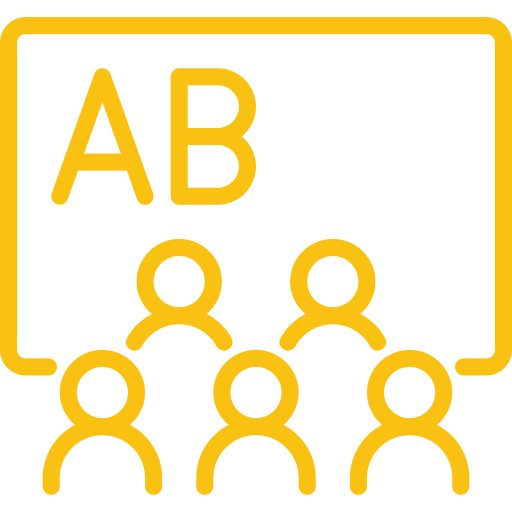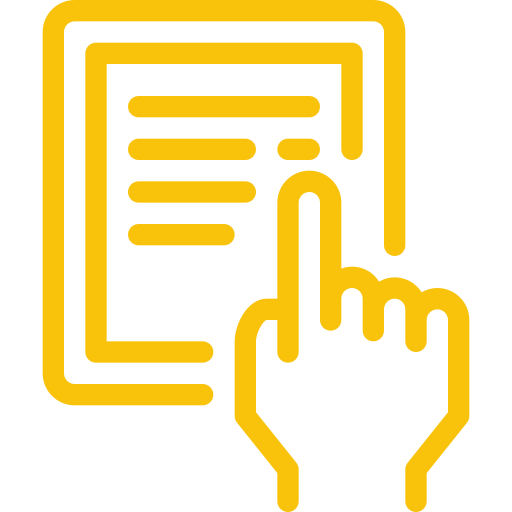Have you ever experienced difficulty in retaining the lesson despite your best efforts? You’re not alone. Each of us is wired with a unique learning style, making the way we absorb information as individual as our fingerprints.
Visual learners might doodle their notes into colorful diagrams while auditory learners could be humming along to a lecture recorded on their phone. There’s kinesthetic folks who learn by doing and reading/writing enthusiasts who can lose themselves in textbooks for hours. Then there are social butterflies that thrive on group discussions and solitary learners who prefer the quiet comfort of independent study.
Learner types, like these, play an essential role in how effectively students engage with subject matter – whether it’s middle school algebra or post-graduate astrophysics.
Feeling intrigued? Great, hang on tight. We’re just about to delve even deeper.
Understanding Learner Types
We all have our own unique learning style. According to the VARK model, there are four main types of learners: visual, auditory, kinesthetic, and reading/writing. But wait. That’s not it. We also find logical/analytical learners who love a good problem-solving session; social/linguistic learners who enjoy the chitter-chatter of group discussions; solitary learners seeking quiet corners for self-study; and nature lovers gaining knowledge from Mother Earth herself.
Now imagine you’re in middle school again (oh no.). Picture yourself trying to understand a complex subject matter like Pythagoras’ theorem or photosynthesis with teaching methods that don’t align with your learner type – feels frustrating right? Exactly why understanding these styles is crucial.
Alright fellow educators, let’s delve into each type more:
- Visual Learners: They learn best through images and diagrams – if they can see it, they’ll get it.
- Auditory Learners: These folks prefer listen over read any day. Engage auditory by including relevant spoken instructions or case studies in lessons.
- Kinesthetic/Tactile Learners: Remember those kids always on their feet during class? Yep, that’s them. Their mantra – ‘Learn by doing.’
- Linguistic/Written Text Enthusiasts: These bookworms will take notes religiously or simply enjoy reading text off slides rather than listening to lectures.
To add another layer here we’ve got those sweet extroverted social/linguistic learners thriving in the hustle-bustle of group discussions and introverted solitary learners who’d rather study alone.
Now, why should we give a hoot about all these learner types? Well, when teachers adapt their classroom management techniques to cater to each type – magic happens. Student learning is enhanced as they can connect better with the subject matter.
If given the right learning conditions, all classroom students can truly flourish. By understanding and leveraging their unique learning styles, we can create a dynamic classroom environment that not only makes learning more enjoyable but also significantly boosts students’ academic performance. This diverse approach fosters an inclusive educational atmosphere where every student feels valued and understood.
Visual Learners
“The idea of visual learning is often encapsulated in the phrase, “A picture is worth a thousand words,” illustrating its importance for those who prefer to see and observe things. Visual learners, as their name suggests, prefer seeing and observing things. This includes diagrams and pictures which can be particularly effective in helping them understand complex concepts.
Reading Textbooks for Visual Learners
A textbook without visuals? For a visual learner, that’s like popcorn without butter – dry and unappealing. The inclusion of plenty of diagrams can make reading textbooks an enriching experience for these types of learners. It provides context to the written text by illustrating what those long sentences are trying to explain.
The images not only break up large chunks of text but also help bring abstract ideas into tangible form. Imagine trying to learn about cells from just reading alone when instead they could be looking at colorful diagrams depicting each part.
The Role of Written Notes
Moving on from textbooks we find another trusty ally in aiding understanding – written notes. Like these visual note-taking strategies from Creately, if you will.
When it comes down to taking notes during class lectures or while studying independently, drawing pictures related to subject matter allows them an additional avenue for absorbing information effectively.
- Jotting down key points in mind maps helps visualize connections between different pieces of information,
- Scribbling doodles alongside explanations turns note-taking into an active process rather than passive absorption, anything to get them to draw pictures will help.
Note: This doesn’t mean every visual learner needs Picasso-like skills; simple sketches work wonders too.
If you or someone you know has a knack for visual learning, don’t be scared to make illustrations in the notes’ boundaries. Visual learning isn’t just about seeing; it’s about creating a vibrant mental picture that makes learning stick.
Visual learners thrive on diagrams, images, and personal sketches to understand complex ideas. Textbooks for these learners should be image-rich, making abstract concepts tangible. Additionally, written notes with doodles or mind maps can transform passive learning into an active process – a personalized mini-textbook of sorts.
Auditory Learners
For some students, learning is a symphony. Sound guides their understanding and retention of subject matter – they’re auditory learners. These folks thrive in environments where listening plays a starring role. (Sometimes called aural learners as well).
Engaging Auditory Learners
If you’ve got an ear for it, teaching auditory learners can be music to your ears. They prefer spoken instructions over written ones, making lectures and group discussions perfect opportunities for them to shine.
To keep things interesting (and educational), try incorporating games into your lessons that engage the sense of hearing or ask questions out loud rather than writing them down. A classroom full of chatter isn’t necessarily a bad thing if it means students are engaged.
But don’t let this fool you; just because auditory learners enjoy sound doesn’t mean they lack focus when there’s no noise around. In fact, silence can sometimes amplify their ability to concentrate as well. As educators looking at unique ways students learn under the VARK model, we need to tune into each student’s individual needs – like adjusting the volume knob until we find just the right level.
Funny enough, many auditory learners also tend toward being verbal processors—they think through speaking—so class debates might become their favorite activity. Imagine those spirited conversations about financial aid programs in middle school social studies… riveting.
- Paying Attention: Listen up. While other types may struggle with long speeches or audio presentations, this is often the best way to engage auditory learners.
- Case Studies: For a practical approach, consider real-life case studies. Auditory learners can engage with the spoken narratives and problem-solve through discussion. Encourage them to read aloud when you need volunteers, they will have an easier time understanding the content while presenting.
The world of auditory learning is vast and varied, filled with unique strategies to keep students involved. From lectures to lively debates, let’s make some noise for this distinctive style of learning.
Check out this article from SplashLearn for more ideas on how to help get auditory learners involved in the classroom.
Auditory learners thrive when sound guides their learning, making lectures and group discussions ideal. Don’t mistake their love for noise as a lack of focus in silence; sometimes it boosts concentration. With games that engage hearing or oral questions, classrooms buzz with activity. Also, real-life case studies offer practical engagement through spoken narratives and discussion.
Kinesthetic Learners
Do you recall the students who couldn’t remain stationary in class? The ones who tapped their feet, doodled on their notebooks, or seemed to be perpetually fidgeting? They were likely kinesthetic learners.
The term ‘kinesthetic’ is just an intellectual expression for ‘gain through action’. VARK Modalities theory tells us that these learners absorb knowledge best when they’re moving around and getting their hands dirty.
Getting Kinesthetic Learners Involved
Incorporating movement and physical activities into teaching strategies can seem daunting at first glance. But fear not. There are plenty of ways to engage this active bunch without turning your classroom into a jungle gym.
To start with, give them frequent breaks during lectures. Studies such as this show that kinesthetic learners benefit from short bursts of information followed by time to digest what they’ve learned through activity. It’s kind of like feeding a baby bird – too much all at once is overwhelming.
A little more action is required here than simply allowing bathroom breaks though. Use this break time strategically; ask students to stand up and share what they’ve understood so far or get them involved in simple exercises related to the subject matter.
We also need tangible learning aids for our kinetic folks: think model kits for science lessons or abacus beads for math problems – things they can touch and manipulate as part of the learning process.
If you’re feeling really adventurous (and have permission slips signed), why not take field trips? Real-world experiences make lessons come alive for kinesthetic learners.
Finally, remember that these learners thrive on variety and surprise. Mix up your teaching methods regularly to keep them engaged.
All in all, helping kinesthetic learners is about thinking outside the textbook and creating an interactive learning environment where students can get hands-on with their education.
Engaging kinesthetic learners means thinking beyond the textbook. Start by offering frequent breaks for physical activities and incorporating tangible learning aids like model kits or abacus beads into lessons. Mix up your teaching methods to keep things fresh, and consider field trips for real-world experiences that bring lessons alive.
Reading/Writing Learners
Let’s shed some light on the champions of words, our reading/writing learners. These are the folks who thrive in a world made up of sentences, essays, and books galore. Now you might be thinking, “Whoa there cowboy. Isn’t everyone expected to read and write at school?” Sure they are. But these learners take it one step further.
The Importance of Written Directions
Picture this: You’re cooking a new recipe for dinner. Do you just start tossing ingredients into the pot hoping it comes out edible? Or do you follow detailed instructions from your cookbook or favorite food blog?
If you opted for written directions over culinary chaos (I do like the chaos a little when cooking, although it doesn’t always work), then congratulations. You’ve got something in common with our word-loving pals here. Reading/writing learners would rather engage with well-written instructions than vague verbal pointers.
You see, linguistic learners enjoy diving deep into texts like Sherlock Holmes sniffing out clues. They love writing essays as much as an Instagram influencer loves snapping selfies.
- VARK Modalities theory, provides us some insights about these literary aficionados.
- The more exposure they have to written words through assignments or general reading – guess what – the better their learning experience becomes.
- This is why teachers need to pay extra attention when drafting those classroom handouts – because good ol’ Shakespeare said it right; “Brevity is the soul of wit.” Clear and concise wins every time. (And extra credit if you got the source of that one).
Social/Linguistic Learners
Ever noticed how some students thrive in group discussions, their ideas sparking off each other like a well-oiled brainstorming machine? These are your social/linguistic learners. They soak up knowledge through interaction and case studies, and their big fans of collaborative learning. They also tend to prefer learning to be a bit louder than the typical classroom.
A study by VARK Modalities, a leading theory on learner types, suggests that these learners enjoy the social aspect of education. But why is that?
The answer lies in our caveman past when storytelling around fire was more than entertainment; it was an essential survival tool. Fast forward to today’s classrooms, this narrative-driven approach still rings true for many students who learn best through verbal exchange.
*As noted by Time4Learning, they are sometimes referred to as interpersonal learners as well.
Tips for Engaging Social/Linguistic Learners
To make sure they’re getting the most out of lessons, here are three key strategies:
- Stir Up Group Discussions: Nothing fires up a linguistic learner quite like an engaging debate or round-table discussion. So toss them thought-provoking questions and let those creative juices flow.
- Leverage Case Studies: Practical examples provide context to theoretical concepts making it easier for these students to grasp subject matter.
- Promote Student Interaction: Collaborative tasks help such learners work together towards common goals while also honing their problem-solving skills. Think project-based learning or team quizzes.
All said and done remember – no two kids are alike. While we’ve focused on one unique learning style here don’t forget there’s always room for customization. After all, it’s about helping each scholar attain success in their own individual fashion.
Solitary Learners
A student alone in the corner of the library, enthralled by their book – this is a solitary learner. No group discussions or team projects, just them and their reading material. Welcome to the world of solitary learners.
Solitary learners tend to absorb information better when studying alone. They have an uncanny knack for paying attention even amidst distractions because they are not reliant on others’ inputs or feedback.
VARK Modalities theory, suggests that these students find their own rhythm and flow with learning materials without needing someone else’s pace to keep up with.
The Written Word as Solitude’s Companion
If you’ve ever wondered why some students seem perpetually attached to books – here’s your answer. Solitary learners prefer engaging with written text over spoken instructions. They love diving into textbooks and taking notes; often tuning out the world as they absorb written content or play learning games.
This affinity towards reading helps them understand complex subject matter at their own pace while keeping classroom management simple for teachers too – fewer disruptions equals more efficient teaching time.
Preferring Individual Learning Over Group Activities
“I work best alone.” You’ll hear this phrase quite often from solitary learners. And it makes sense when you consider how individual learning allows them to set their personal milestones rather than being tied down by collective progress.
- A solo study session lets them take frequent breaks whenever needed, aiding retention ability.
- The absence of peer pressure leads to reduced stress levels which contributes positively towards mental health.
- And most importantly, self-study promotes independence and self-discipline, both crucial life skills.
So next time you see a student happily immersed in their own learning bubble, don’t mistake it for antisocial behavior. They’re just solitary learners – embracing their unique learning style.
Imagine a student, immersed in their book and distanced from the hustle. That’s your solitary learner right there. They bloom when they’re studying solo, discovering their own pace without having to match anyone else’s stride. These learners forge deep connections with written text and usually choose one-on-one learning over group shenanigans. This style isn’t antisocial as it may seem; instead, it cultivates independence and self-discipline while dialing down stress levels.
Accommodating Different Learning Styles in Education
Educating isn’t a matter of simply using the same technique for everyone. Like trying to fit neatly into your old high school jeans, forcing students into the same learning mold can be an uncomfortable squeeze. VARK Modalities theory reminds us that each student has a unique learning style and shines when their individual learning styles are catered to.
Classroom Management for Diverse Learning Styles
You might ask yourself, “How do I manage this beautiful chaos?” Well, it’s less about coming up with specific learning, visual cues, or special activities for social learners for each assignment. How learners learn is important, but they also need to be exposed to other activities as well.
To reach a wider range of students you need to make sure some lessons appeal to visual learners who thrive on diagrams or auditory learners who could listen all day long but may have time understanding spoken instructions if they’re not clear.
Incorporate activities (such as these from Teaching Expertise) like group discussions where social/linguistic learners shine while solitary learners find value in written assignments they can mull over at their pace. And don’t forget about kinesthetic learners. They crave hands-on activities so get them involved.
Taking care of these different learner types does require some flexibility (like yoga-level flexibility), but remember that our goal is making subject matter stick better than glitter on craft day.
To aid in managing classroom diversity effectively try mixing things up regularly just as how chefs toss ingredients together for that perfect salad blend. Use strategies such as having students write down key points from lectures (this helps both auditory and reading/writing learners), providing visuals whenever possible (think infographics), encouraging group work (which engage auditory listeners) and offering frequent breaks especially for those squirmy kinesthetic ones among us.
It’s about options instead of one-size-fits-all learning. Just because auditory learners learn have an easier time understanding spoken information, and would prefer reading to be out loud rather than silently, doesn’t mean they don’t need to be exposed to learn that way as well.
Remember, effective classroom management is about creating a symphony of learning styles. So, let’s start conducting.
Just like a well-crafted salad mix, successful teaching requires regular shaking up. To create an effective learning symphony, tailor your approach to suit each student’s unique style. Whether they’re visual, auditory or kinesthetic learners, make sure you keep things varied with diagrams, discussions and hands-on activities.
Conclusion
Now you’re equipped with the tools to engage different learner types effectively. That’s no small feat!
Visual learners? You’ve got diagrams and colorful notes ready.
Auditory learners? Lectures and discussions are your allies.
Kinesthetic students will benefit from hands-on activities, while reading/writing enthusiasts can dive into well-crafted essays.
Let’s not forget our social butterflies thriving on group projects, or solitary scholars preferring quiet study.
Remember, understanding these styles isn’t just academic jargon – it’s a powerful tool that enhances student learning.
With this knowledge in hand, you’re ready to connect better with your students’ unique learning style!
If you are looking to learn more, consider taking one of our graduate classes here at MTI. We offer the most affordable graduate classes on the market, developed by real teachers.
Unlike other companies, we have zero hidden costs, and we provide the syllabus before you sign up. Some surprises are good, but they shouldn’t involve your money or time.
And if you’re interested in teaching with us, feel free to reach out via any of our social media links, or send an email to [email protected] for more details.
And don’t forget ot check out the Inspired Teacher Hub for more ideas and strategies to help your classroom.





















